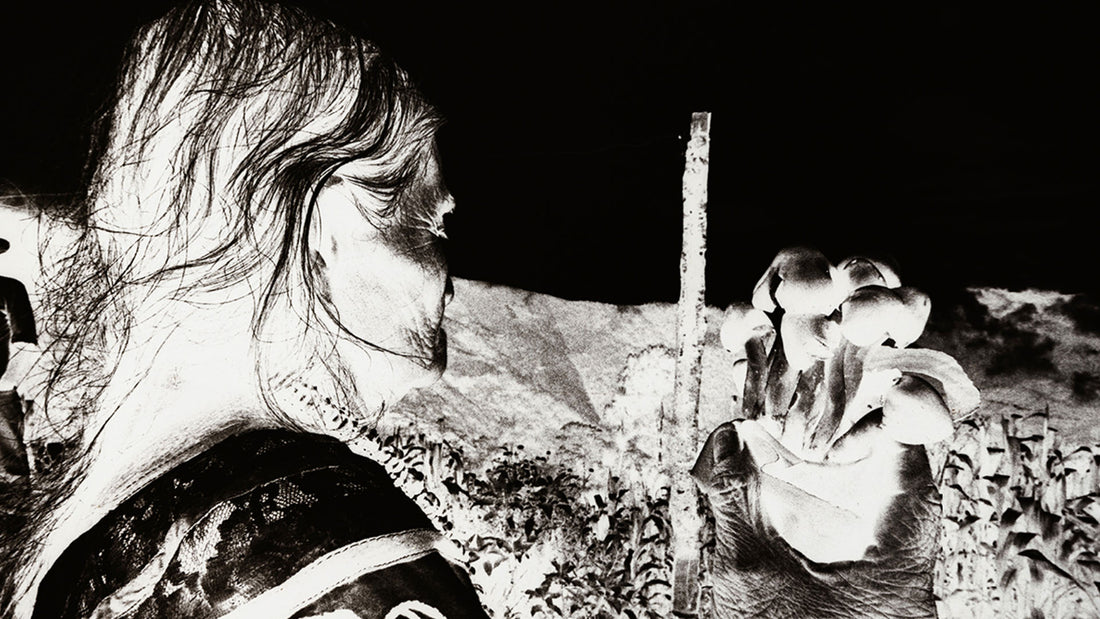María Sabina: A Shamanic Pioneer
In the rugged mountains of southern Mexico, amidst the lush landscapes of Oaxaca, there lived a wise curandera named María Sabina Magdalena García. Revered by her community and embraced by seekers of spiritual enlightenment, María Sabina became a guiding light in the realm of psychedelic exploration and shamanism. This blog post delves into the life and profound impact of María Sabina, the Mazatec healer who unlocked the secrets of fungi and paved the way for modern-day shamanism and the world of psychedelics.
María Sabina, is widely regarded as one of the most influential figures in modern day shamanism and the world of psychedelics. Born in 1894, Sabina became known for her profound knowledge of traditional healing practices and her use of entheogenic substances, particularly the sacred mushroom known as psilocybin. From an early age, she learned the sacred practices of her ancestors, who held a profound reverence for the natural world and the healing power of plants. María Sabina was initiated into the sacred rituals of the Mazatec curanderos, who used fungi as a means to communicate with the divine and heal the mind, body, and soul.
The Sacred Mushrooms of Oaxaca
Oaxaca, a region in southern Mexico, is home to a rich tradition of shamanism and spiritual practices. It is also where the sacred mushrooms that María Sabina would become famous for are found. The Mazatec people, Sabina's indigenous community, have a long history of using these mushrooms for medicinal, spiritual, and divinatory purposes.
Sabina's expertise in working with the mushrooms was exceptional. She had an innate ability to connect with the spirit world and guide others through transformative experiences. Through her ceremonies, she helped people heal physical and emotional ailments, gain spiritual insights, and connect with their higher selves.
Unveiling the Magic of Fungi:
Central to María Sabina's knowledge was the ceremonial use of psilocybin-containing mushrooms, known as "teonanácatl" or "flesh of the gods." She believed that these sacred fungi were a gateway to the spirit realm, allowing her to connect with deities and ancestors. With her mesmerizing chants and rituals, María Sabina facilitated profound experiences for those seeking spiritual insight, emotional healing, and personal growth.
Becoming the Mushroom's Ambassador:
Word of María Sabina's mystical abilities spread beyond her remote village, drawing curious souls from all corners of the globe. In the 1950s and 1960s, prominent figures, including renowned ethnomycologist R. Gordon Wasson and mycologist Roger Heim, traveled to Oaxaca to experience the transformative power of the sacred mushrooms under María Sabina's guidance. Their encounters with her profound rituals were documented in articles and books, elevating her to the status of a cultural icon.
The Psychedelic Movement and Spiritual Revolution:
As the psychedelic movement of the 1960s swept the world, María Sabina's influence reached far beyond her humble village. Her sacred ceremonies, once kept within the confines of the Mazatec community, captured the imagination of the counterculture. The belief in the interconnectedness of all living beings, championed by María Sabina, resonated deeply with those seeking alternative spiritual experiences and personal liberation.
Impact on Modern Day Shamanism
María Sabina's work with mushrooms and her approach to shamanic healing attracted the attention of researchers, artists, and spiritual seekers from around the world. Her open-hearted and compassionate nature, combined with her deep understanding of plant medicine, made her a revered figure in the psychedelic community.
Sabina's influence can be seen in the resurgence of interest in shamanism and the exploration of entheogenic substances as tools for personal growth and spiritual transformation. Her teachings and practices have inspired countless individuals to embark on their own journeys of self-discovery and healing.
The Legacy of María Sabina
Despite facing criticism and exploitation during her lifetime, María Sabina's legacy continues to resonate today. She is remembered not only for her knowledge of the sacred mushrooms but also for her wisdom, compassion, and dedication to helping others.
Her impact on modern day shamanism and the world of psychedelics cannot be overstated. María Sabina's work has paved the way for the integration of traditional shamanic practices and the exploration of entheogens in contemporary healing modalities.
María Sabina's legacy persists in modern-day shamanism, where the use of sacred plants for spiritual exploration continues to hold significance. Her teachings and practices have inspired countless modern shamans, healers, and practitioners who work with entheogenic plants in various parts of the world. They honor her wisdom by respecting the sanctity of these substances and the cultures from which they originated. As we continue to learn from her teachings, we honor María Sabina and the profound wisdom she shared with the world.
Conclusion:
María Sabina Magdalena García's profound knowledge of fungi and her contributions to the world of psychedelics and modern-day shamanism continue to be a source of inspiration. As we delve deeper into the realms of consciousness and spiritual exploration, her teachings serve as a reminder of the profound interconnectedness between humans and nature. We must approach such sacred practices with respect for the cultures from which they originate and embrace the lessons of humility, healing, and unity that María Sabina embodied. Let us honor her legacy by treading on the path of psychedelic exploration with reverence, compassion, and a deep sense of responsibility toward both the plants and the people who have guarded their wisdom for generations.

